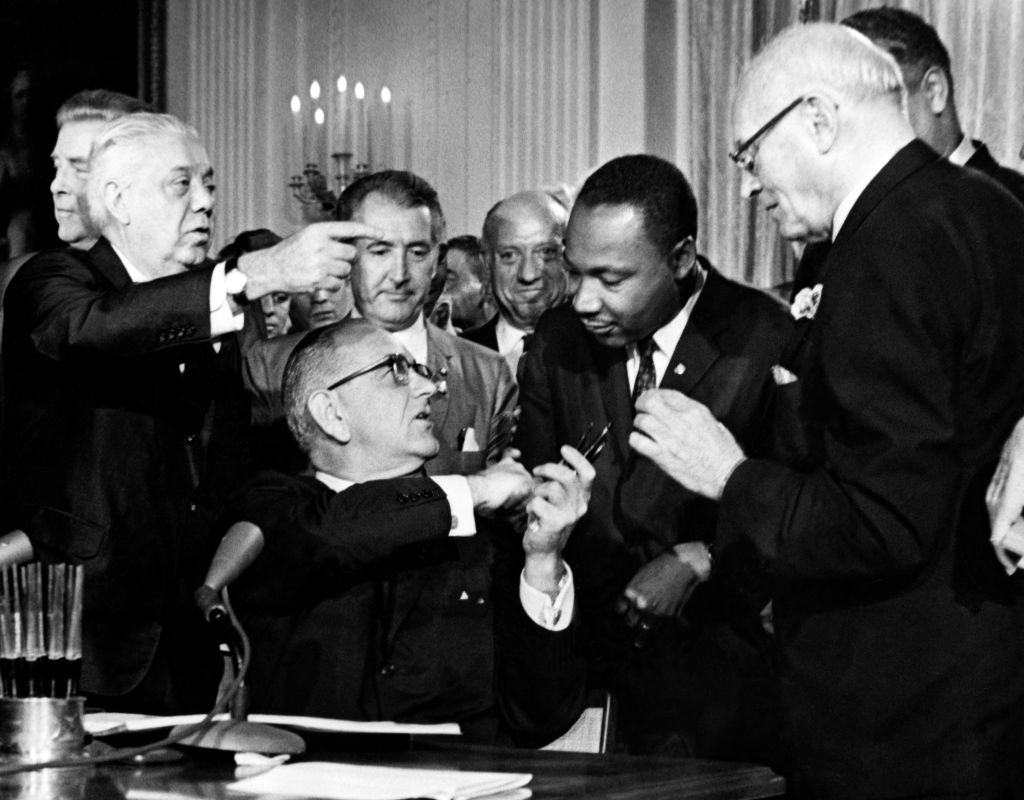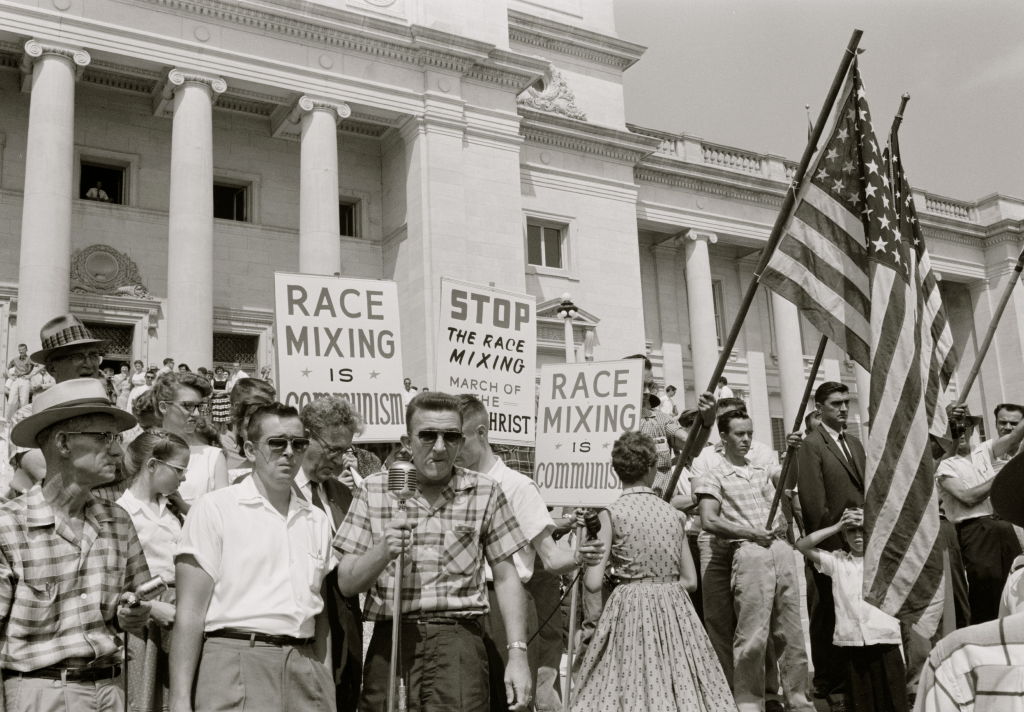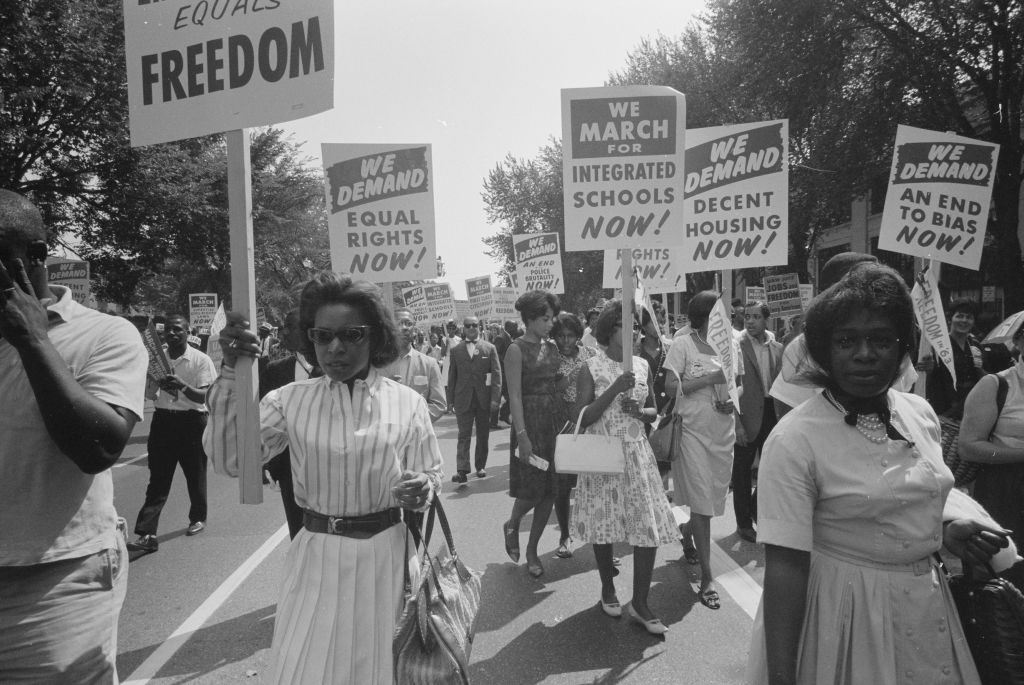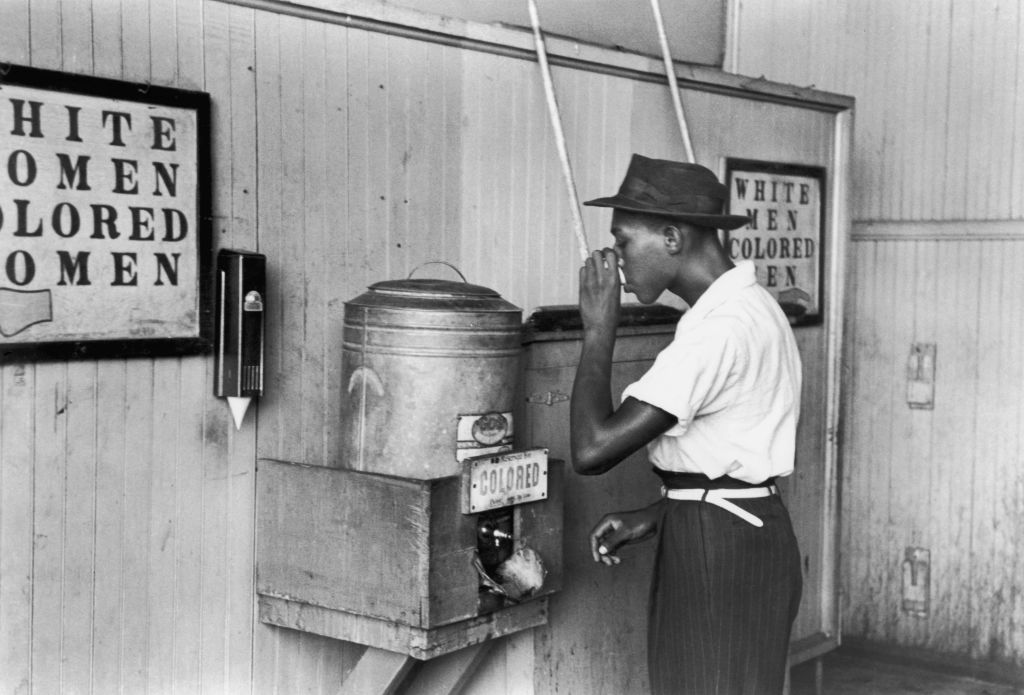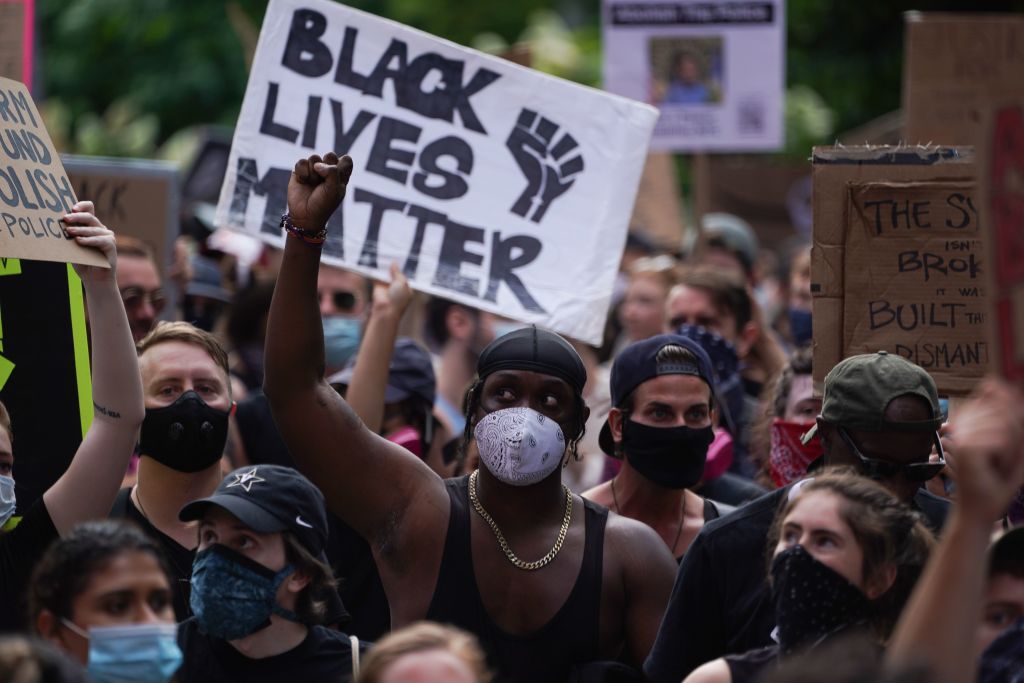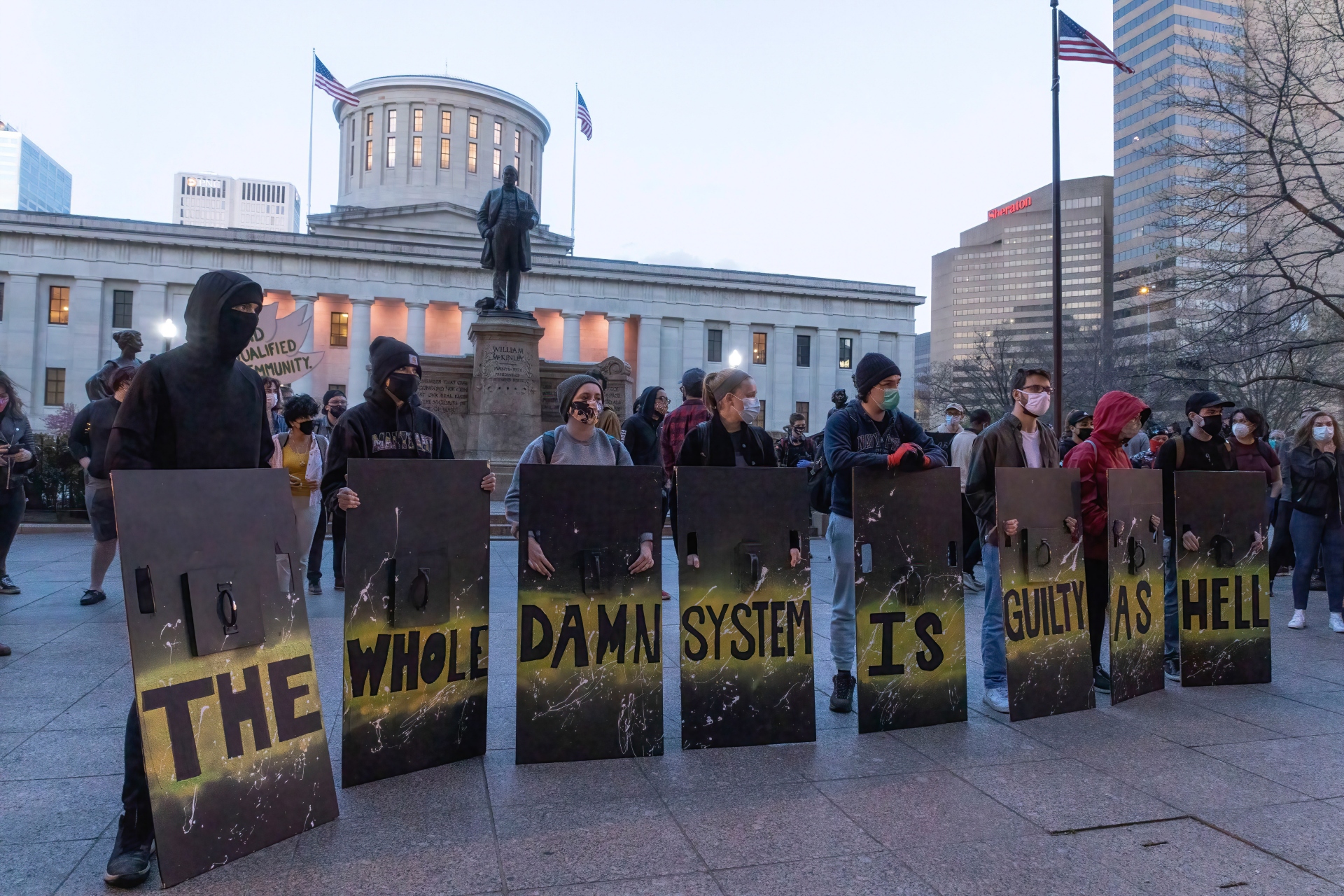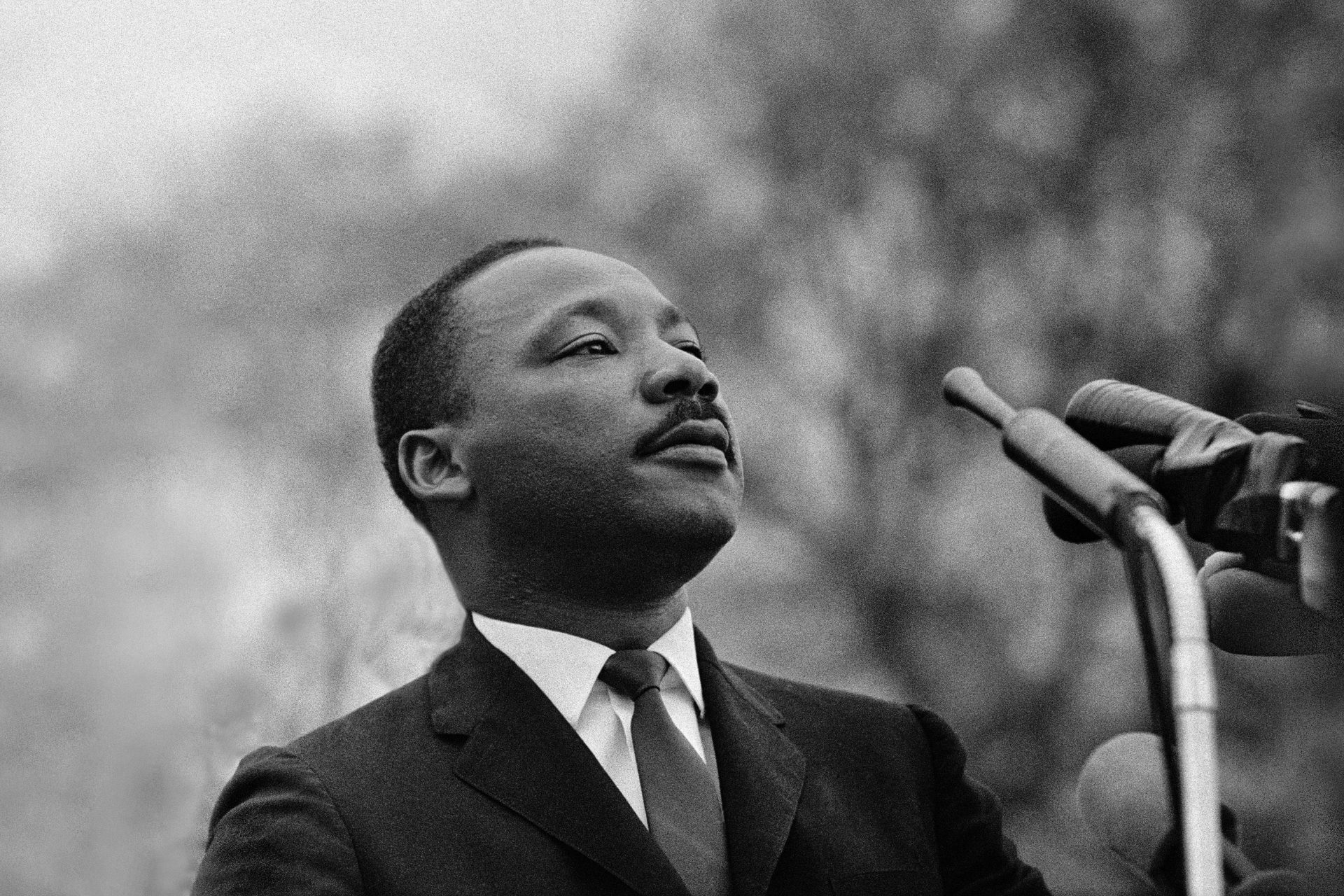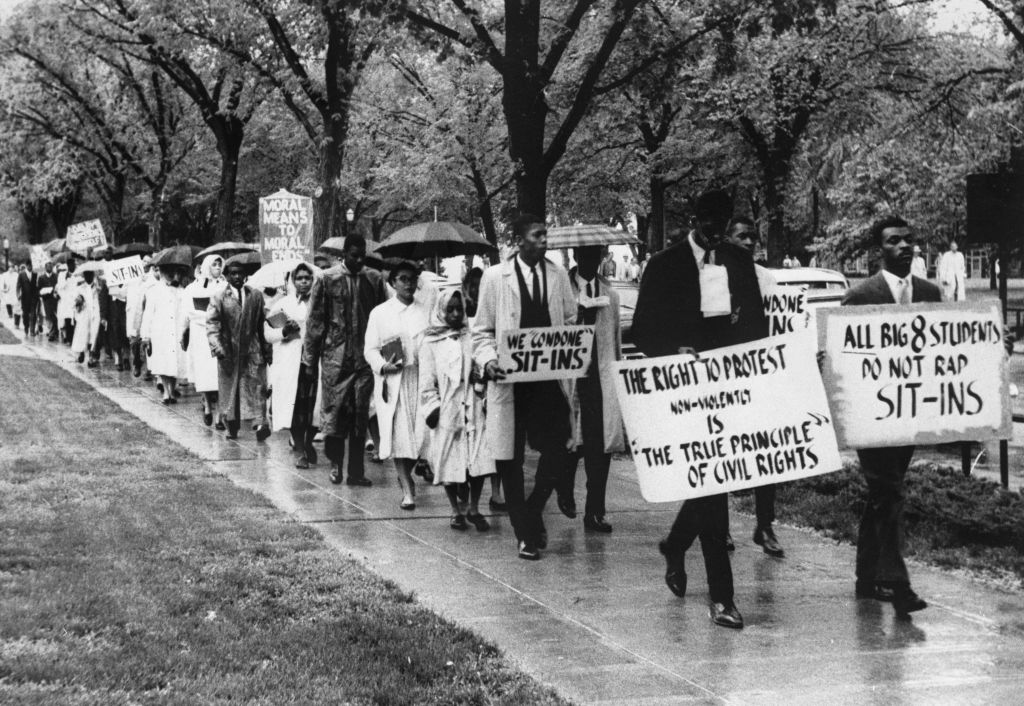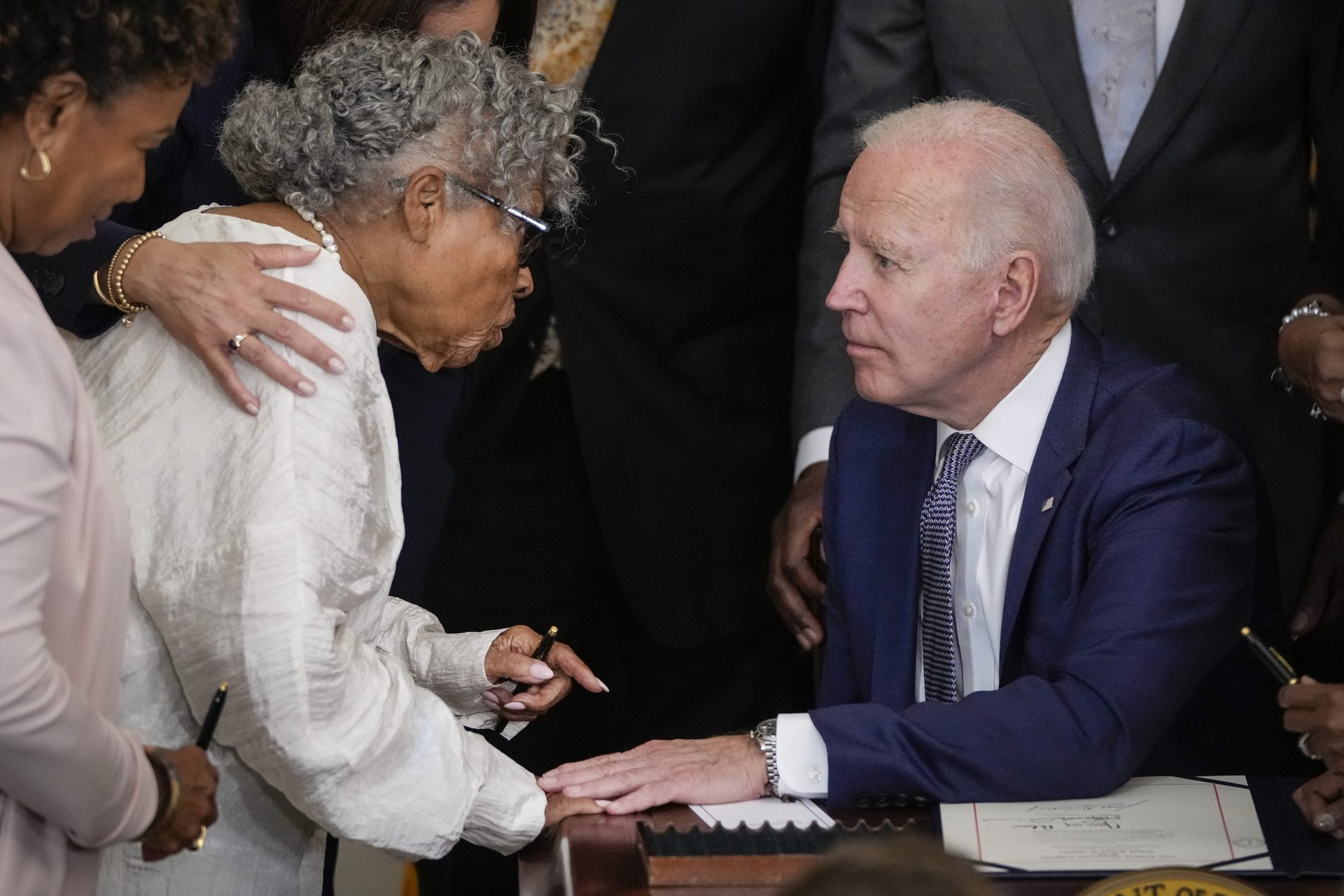What has changed in the US since the Civil Rights Act was signed 60 years ago?
Prior to his death, President Kennedy sent civil rights legislation to Congress in June 1963 faced with political pressure, both domestically and internationally, as police brutality against Black Americans was making headlines around the world.
When the monumental bill was finally signed into law, it resulted in the ban of discrimination and segregation based on race, religion, national origin, and sex.
Photo: Little Rock high school 1959
The law applied to government agencies, public schools, employers, and private institutions that received federal funds.
The legislation increased Black people’s life expectancy by 6 years in 1960 after the Civil Rights Act saw hospitals end segregation, according to the National Library of Medicine. Today, however, there are still gaps in life expectancy among racial groups in the US.
In 1964 there were only 100 Black elected officials in the country. By 1990 there were 10,000. Since then, the number has just increased with America seeing its first African-American president in 2009.
Experts say that the 1964 Civil Rights Act also paved the way for future rights of other marginalised groups of society, such as for gay marriage.
“I think that's one of the greatest legacies of the Civil Rights Act because when you look at it, you're saying that this country belongs to everybody. And if it's going to belong to everybody, everybody should have equal protection,” said Proffesor Omekongo Dibinga to ‘American.edu’.
But even though many things have changed for Black Americans and other minorities in the US, since the Civil Rights Act of 1964, the fight for equality was far from over then, and it is still far from over now.
After the bill was signed into law, leaders of the movement, Malcolm X and Martin Luther King Jr., were assasinated in 1965 and 1968 respectively.
In 1965, around 600 protesters marching from Selma to Montgomery were brutally attacked by police, culminating in what is known as Bloody Sunday, which saw the killing of 13 people and the injury of many others.
It wasn’t until 1968 that president Johnson would sign another Civil Rights Act, also known as the Fair Housing Act, that provided equal housing opportunity regardless of race, religion or natural origin.
But discrimination and police brutality against Black people and other minorities; health and wealth inequality have continued since in the country, resulting in the birth of several movements and organizations fighting for equality.
However, if we can learn something by looking at the history of the fight for equality of Black people in America, is that it is possible. Kelly Robinson, president of the Human Rights Campaign told USA Today she’s “living proof”.
Robinson told USA Today that her great aunt’s family escaped slavery making her way from Mississippi to Muscatine, and now, two generations later, she’s the first queer Black woman to serve as president of the organization.
Photo: “Grandmother of Juneteenth”
More for you
Top Stories



